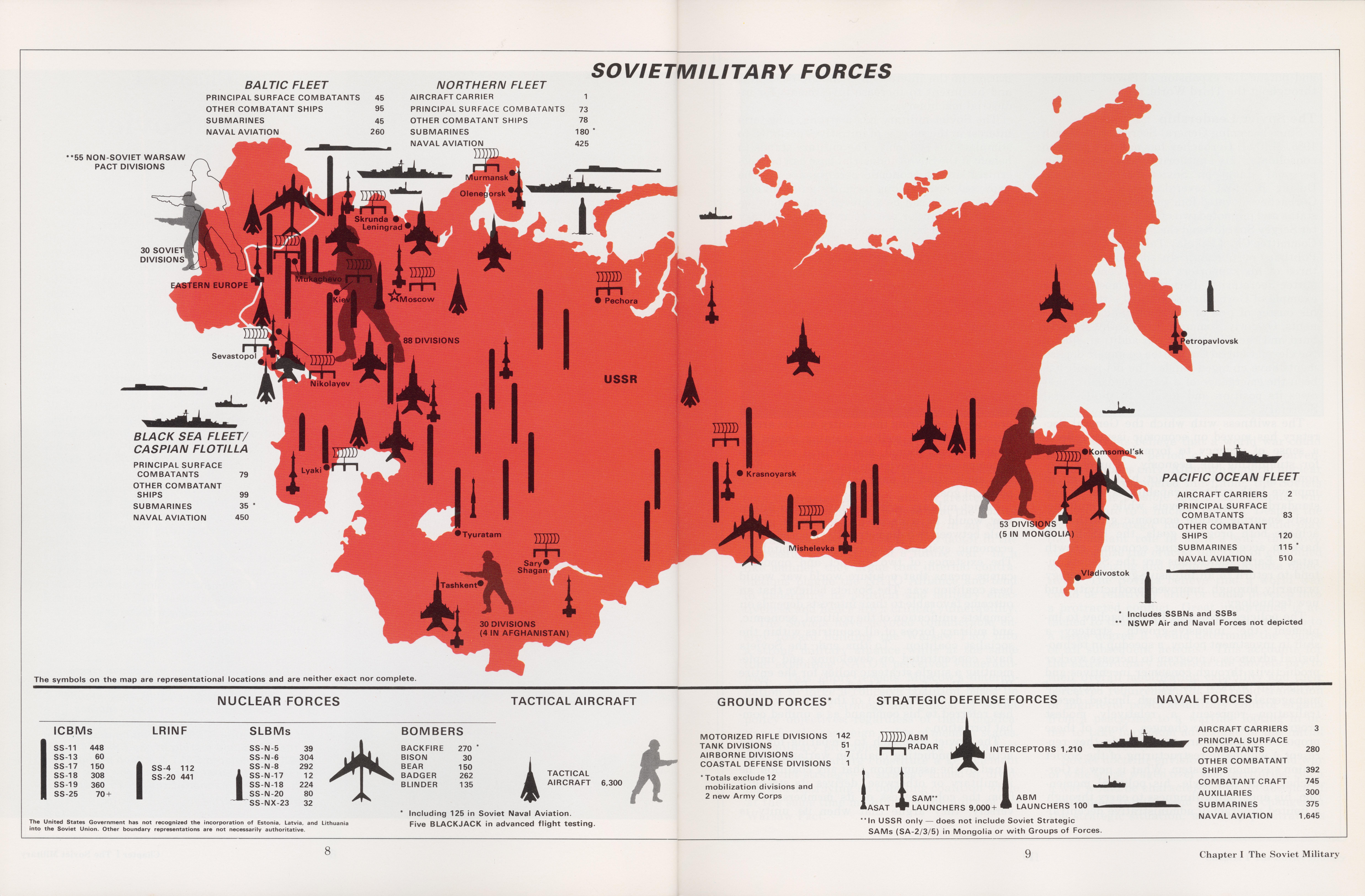1986 Map of Soviet Military Forces


Marcus Rodriguez
Historical Geography Expert
Marcus Rodriguez specializes in historical cartography and geographic data analysis. With a background in both history and geography, he brings unique...
Geographic Analysis
What This Map Shows\nThe 1986 map showing the Soviet Military Forces provides a comprehensive overview of the geographical distribution and strategic positioning of the Soviet Union's military assets during the Cold War. This visualization captures the locations of military bases, troop concentrations, and the deployment of various military divisions across the Soviet territory and its satellite states, reflecting the geopolitical tensions of the era.
Deep Dive into Soviet Military Forces\nThe Soviet Union, at its height, was a formidable military powerhouse, and its forces were structured to project power both within its borders and beyond. Interestingly, the military was not merely a reflection of the nation's defense capabilities but also a tool of political influence. The Soviet military force included land, air, and naval components, with a heavy emphasis on ground forces, which comprised a significant portion of its military expenditure and personnel.
In 1986, the Soviet military was organized into several key components: the Ground Forces, the Navy, and the Air Force. The Ground Forces were the most substantial, with approximately 2.4 million active personnel and a vast array of armored divisions, motorized rifle divisions, and artillery units. The sheer size of the Soviet Army was a deterrent against potential adversaries, particularly NATO.
What’s fascinating is the Soviet Union's reliance on a doctrine known as Deep Battle, which emphasized the importance of coordinated attacks across multiple fronts, integrating air and land forces. This doctrine was put to the test in conflicts such as the Soviet-Afghan War, which began in 1979 and was ongoing by 1986. Here, the map would highlight the deployment of troops and resources in Central Asia, showcasing the challenges faced by Soviet forces in a protracted guerrilla conflict.
Moreover, the naval forces of the Soviet Union also played a critical role during this period. The Soviet Navy was designed to protect its extensive coastline and establish a presence in international waters. The map likely illustrates key naval bases along the Baltic Sea, the Black Sea, and the Pacific, which were strategically positioned to counter NATO naval operations.
The Air Force, albeit smaller than the Ground Forces, was equipped with advanced aircraft capable of long-range operations. This included the deployment of strategic bombers and fighter jets, which were stationed in various locations across the Soviet Union, enhancing their rapid response capabilities in times of conflict.
Regional Analysis\nExamining the map further, we can break down the distribution of military forces by region. In Western Europe, for instance, the presence of Soviet troops was primarily concentrated in Eastern Bloc countries like East Germany, Poland, and Czechoslovakia. These deployments were significant not only for their size but also for their role in deterring any potential Western aggression. The Warsaw Pact, formed as a counterbalance to NATO, showcased the strategic importance of these regions to Soviet military planners.
Conversely, in the Far East, the Soviet military presence was aimed at countering China and the United States' influence in the Pacific. Regions like the Soviet Far East housed substantial military assets, including missile launch sites and troop formations, which were essential for maintaining a strategic balance in the area.
Interestingly, the Caucasus and Central Asia were also focal points for military logistics and operations. With borders adjacent to volatile regions, the Soviet military forces in these areas were crucial in managing both internal and external threats, particularly considering the various ethnic tensions that existed.
Significance and Impact\nUnderstanding the distribution and organization of Soviet military forces in 1986 is crucial for comprehending the dynamics of the Cold War. The map serves as a historical snapshot of military readiness and geopolitical strategy during a tense period marked by nuclear arms races and ideological clashes.
Today, the legacy of Soviet military strategies continues to influence modern military doctrines and geopolitical strategies in the post-Soviet states and beyond. The dissolution of the Soviet Union in 1991 transformed the military landscape, yet many of the bases and strategic locations identified in the 1986 map remain significant in contemporary military considerations.
Moreover, as nations reassess their military postures in light of emerging threats, the lessons from the past—especially from the Soviet era—continue to resonate. The strategic importance of military geography, as illustrated by this map, remains paramount, as countries worldwide navigate the complexities of defense, deterrence, and diplomacy in an ever-evolving global landscape.
Visualization Details
- Published
- October 5, 2025
- Views
- 46
Comments
Loading comments...